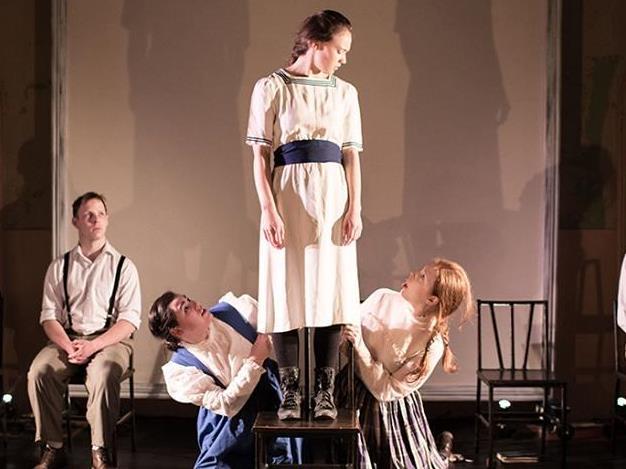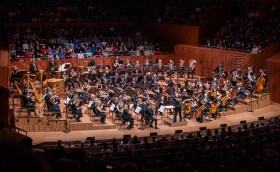Awakening by Daniel Lammin, image via Fortyfivedownstairs.
Between its original 2016 season and its recent remount, plenty has been written about Daniel Lammin and MUST’s Awakening, and plenty of it glowing. And the production deserves praise – there were moments that took my breath away. Ultimately, though, I’m puzzled as to why this team – and so many others in Australia and around the world – seem to think Frank Wedekind’s Spring Awakening has something holy to offer us; something which couldn’t or explored in any other play, new or extant.
The adaptation crafted by Lammin and his team is split into two halves – one half set in Wedekind’s time (kinda), the other set in 2017 (kinda). But there are slippages, with 19th Century school children taking selfies and distressed teenagers freaking out to top 40 bangers. Though the intention of these moments may be to remind us that ‘teenagers are basically the same as they ever were,’ the effect is ultimately to sap the entire first act of cultural specificity. Without a clear sense of context, it became difficult to read the action and its cultural context.
This first act – in fact the entire play – was at its strongest, therefore, when it dealt with universals; those few experiences and troubles that have cropped up throughout history and across the globe. Specifically, every moment featuring Wendla and her mother was arresting. In these scenes, Lammin and his company use a performance conceit of doubling the performance of the mother – a choice that is rich with different readings and potentials. The bodies, voices and looks of the two ‘mother’ figures illuminated a rich interior world of the mother, with the daughter at the centre – and this world broke down in perfect devastation as two actresses (two bodies, two voices) struggled with the effort of supporting that daughter in crisis.
The piece begins to click from the beginning of the second half, with a stronger context given for the action, anchoring the second act and making sense of the first. But here, again, I am forced to return to the question – why this play? Lammin and company draw from the source text to find many compelling vignettes, but the first half is so thoroughly stacked in favour of three of the characters (Wendla, Moritz and Melchior) that, despite thoroughly enjoying their vignettes, I had very little idea who these other characters were that I was watching in the second half, or what their journeys had been up until this point.
Another highlight is a monologue delivered by the stunning Nicola Dupree towards the end of the play, about the fate of Wendla after a sexual assault. This is a rich piece of writing which I hope will ignite plenty of debate around the portrayal of sexual assault and its survivors. This is a moment where the play steps out of its realism to become anthemic; an offering to women and survivors everywhere. It sits a little uncomfortably as an incisive and perfectly formed speech in the context of a play about the undirected, unformed, utterly potent rage of youth, but it feels as though it’s worth it to change the narrative.
The show ends on a quote about the negative impacts of current educational institutions and frameworks on our ability to develop as human beings. Infuriatingly, this is one of the few themes that doesn’t make much of a showing in this particular adaptation – so why end on this quote? Theological concerns were also neglected, with this adaptation seemingly content to opt for a blanket ‘religion is bad’ attitude, without interrogating the particularities of the characters’ religious experiences within a wider cultural context.
As mentioned, there were truly breathtaking moments throughout this production, and I admired its scope and ambition in leaping out to a number of different places from the source text. It is rich with intellect, ideas, and possibilities, and will make for delicious and meaningful post-show conversation, if you allow yourself to sit in the discomfort this production creates.
Rating: 3 ½ stars out of 5
Awakening
Writer/Director – Daniel Lammin
Lighting Design – Shaun Haney
Set Design – Julia Kaddatz
Costume Design – Charmian Sim
Sound Design – Sam Porter
Cast: Nicola Dupree, Samantha Hafey-Bagg, Eamonn Johnson, James Malcher, Sam Porter and Imogen Walsh
Fortyfivedownstairs, Melbourne
10-21 May, 2017





